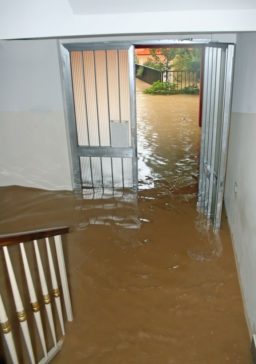Civil Engineering Firms Can Advise Cities on How to Be More Flood Resistant
For some people, rainfall is a nuisance, something that prevents them from heading out or causes traffic jams on city streets. If you’re a resident of New Orleans, however, you know that rains are often the prerequisite for flooding—something that has devastated the city in past years.
With the recent run of stormy weather, the city once again faces one of its oldest adversaries. As reported recently, Louisiana’s governor has recently declared a state of emergency in New Orleans due to the heavy flooding that has left hundreds of homes and businesses inundated.
The report adds that one of the biggest reasons for the said flooding was the city’s overwhelmed pump system. Because many parts of the city are below sea level, water pumps are present in every neighborhood to drain the rainwater out of storm drains and canals into the nearby water bodies.
However, the heavy rainfall in the preceding days has tested the pump’s ability to draw water away effectively. Further compounding the problem are the aging pumps themselves, which are now over a hundred years old. As such, they are in constant need of repair and maintenance—a difficult task, especially when storm season sets in.
The Importance of City Planning
This most recent episode of flooding shows the need for modern city planning. After all, how can one expect to foster modern urban living if a city runs on centuries-old infrastructure? The good news is that there are many cities both in and outside of America that demonstrate how good urban planning can prevent floods from happening.
Iowa, U.S.A.
Much like New Orleans, Iowa is a city built on the banks of a river. As such, flooding is also a major concern for the city government. However, through partnership with Iowa State University and the University of Iowa Flood Center, the city was able to effectively curb flooding not just now but in the future, too. They did this by using historical rainfall data, climate forecasting, and streamflow modeling to estimate future flooding in the region. With this data in hand, they were able to identify at-risk roads, bridges and other infrastructure, and add design elements that made these more flood resilient.
Mississauga, Canada
A huge swath of the Credit Valley Watershed in Ontario, Canada is slated for development. However, development disrupts the watershed’s ability to retain and eventually absorb runoff, thus causing flooding to nearby districts such as Mississauga. In response to this, the Credit Valley Conservation Authority (CVC) has committed to low-impact development infrastructure to prevent flooding. As a result, there has been an almost 80% reduction of the runoff.
The Netherlands
You won’t expect it, but the Netherlands has many similarities to New Orleans, chief of which is the fact that about 30% of the country lies below sea level. As such, flooding is a major concern in the country.
To counter this disaster, the Netherlands adopted a more proactive than reactive approach to flood prevention. It developed the Room for the River program, wherein riverbanks were cleared of silt, diversions were made for the excess river water, and the marsh was restored to better absorb rainwater—all in an effort to keep cities flood-free.
As you can see, urban planning is a must if issues such as flooding are to be addressed properly and efficiently. Of course, local governments, such as those in New Orleans need expert counsel from trusted civil engineering firms, especially if additional infrastructure must be constructed or if current ones need to be rehabilitated. With the help of such specialists, cities can have the necessary features and infrastructures to become more resilient against flooding.
Sources:
New Orleans flooding and pumping system crisis by the numbers, cnn.com
Eight Ways Cities Are Building Climate Resilience, iisd.org












